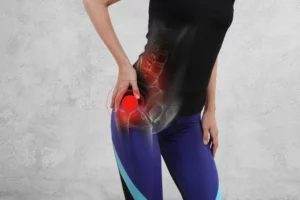The following two stories are typical of women we see with pelvic floor problems limiting their exercise. Names have been changed.
Cathy is a 36 year old woman with three children. The youngest had just started school and, with a little more time available, Cathy wanted to regain some fitness and joined an outdoor fitness group. Her exercise was previously walking and occasional jogging. She was concerned to find that there was some leakage of urine with some of the jumping and interval running activities in the training sessions.
She had not mentioned it to the trainer, was reluctant to wear a pad and was considering stopping the classes.
When Cathy was assessed we found that her pelvic floor muscles were quite strong, however they did not switch on quickly or automatically in preparation to cough. We gave Cathy some pelvic floor exercises to be done twice a day. As well as long holds (10 seconds) she did some fast repetitions and in functional positions. We suggested discussing with the trainer an alternative exercise to star jumps. She mentioned this to a friend in the class who was also worried about the star jumps and together they mentioned it to the trainer and did “fast feet” instead.
Cathy made gradual improvements over 3 months of progressing the exercises. She still avoids the star jumps but is able to do most of the other exercises and is feeling fitter and happier.
Beverley is a 66 year old woman who had always walked for exercise. Recently she had experienced worsening urinary urgency – needing to empty her bladder in a hurry, and occasionally leaked on the way to the bathroom. This had happened a few times when out walking so she was careful to walk only where there were toilets nearby. Beverley had also noticed her prolapse was more noticeable after carrying a heavy suitcase on holidays and had consulted a specialist about possible surgery. He had recommended she try physiotherapy with us. Beverley was given some pelvic floor exercises as well as some strategies to help control her urgency. Beverley’s urgency improved significantly after 2 visits. She continued her pelvic floor exercises for 4 months until a review with her specialist. By this time the prolapse was much less bothersome and there was no need for surgery. She is back to her usual walking routine and has made pelvic floor exercises a regular part of her week.


